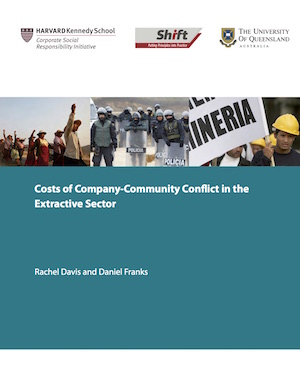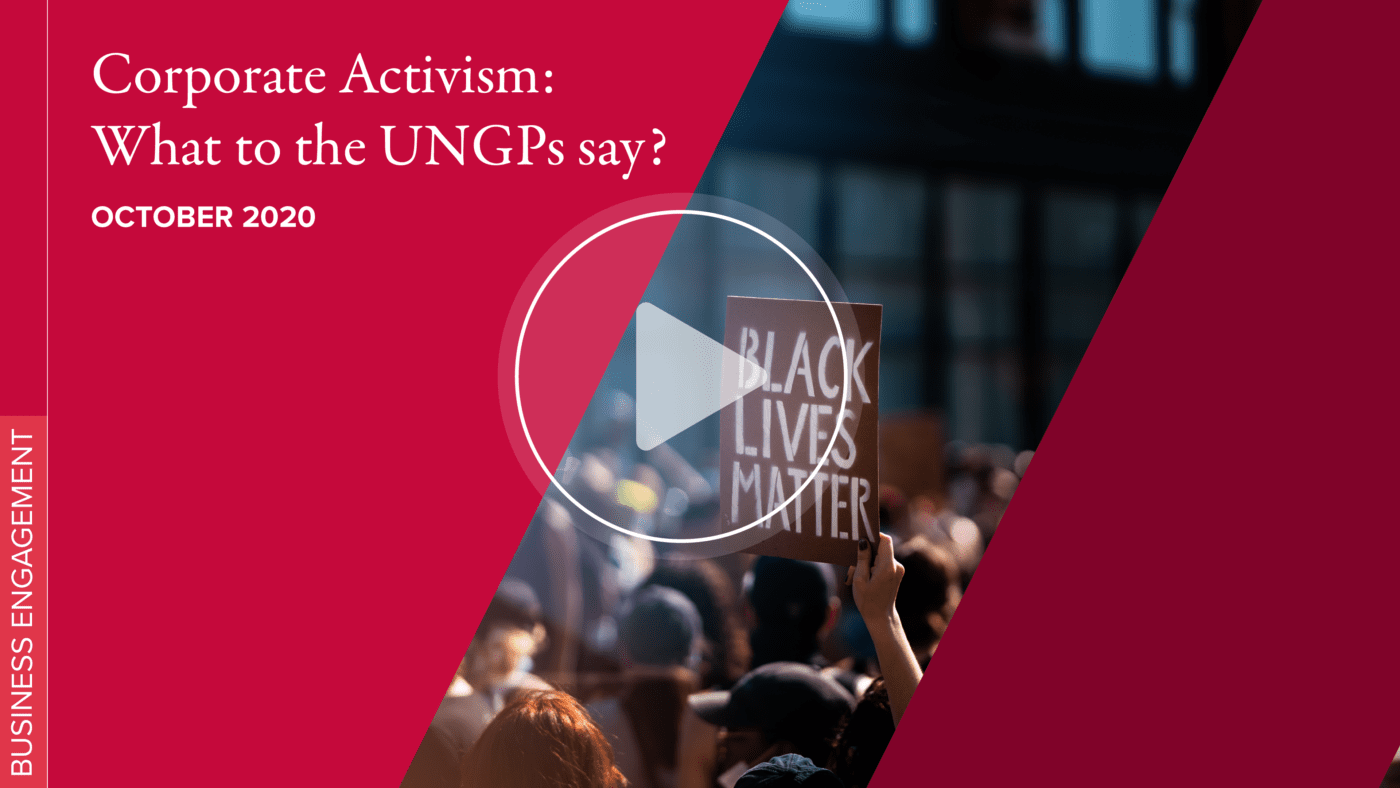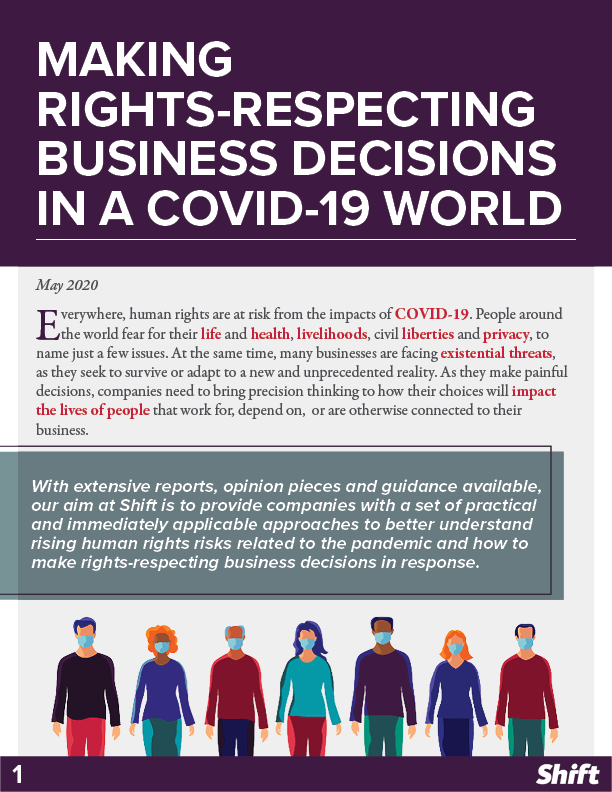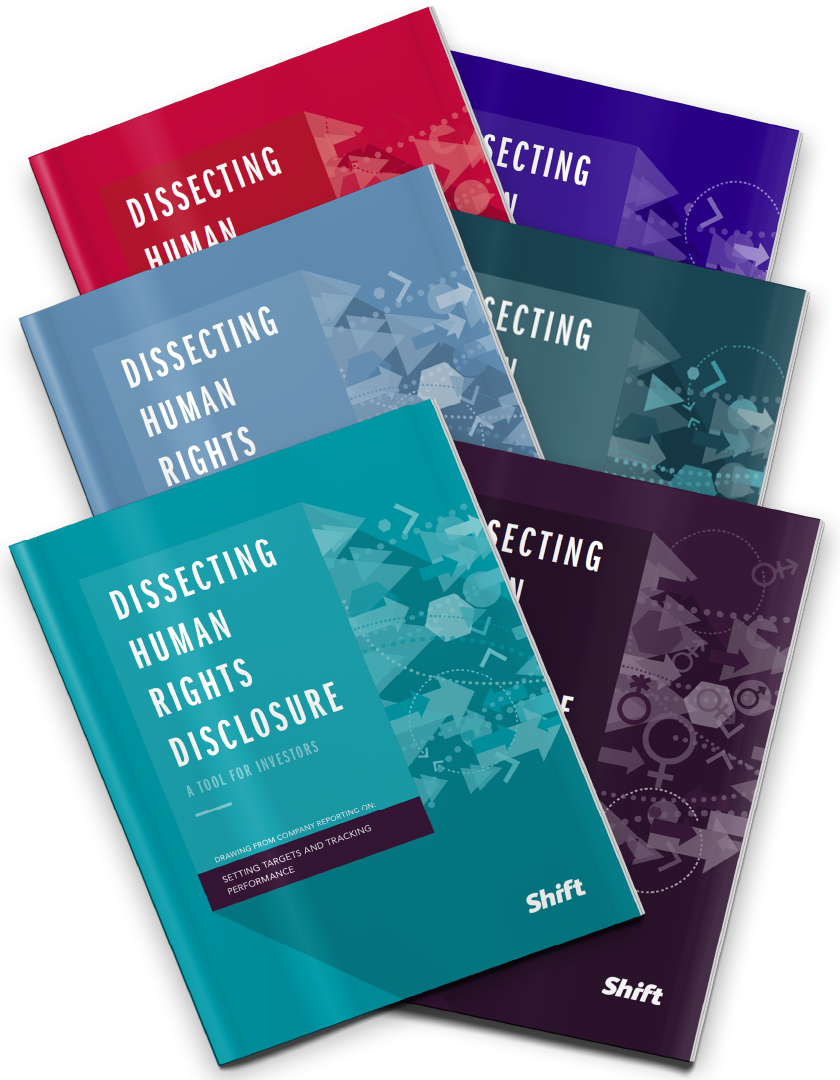This resource was developed through extensive confidential interviews with industry, analyses of 50 publicly available cases, as well as field work in Peru. It contains a typology of costs that are of relevance to companies well beyond the extractive sector. The summary below is excerpted from the resource.
Summary
Over the past decade, high mineral and energy commodity prices have driven expansion of the extractive sector. Mineral and energy developments profoundly transform environments, communities and economies – and can often generate social conflict. This study seeks to answer the question: if the costs of conflict experienced by companies in the extractive industry were better understood, would relationships between companies and local communities receive greater priority and attention?
Through in-depth interviews and empirical case analysis, the study explores the value at stake when companies in the extractive sector experience conflict with local communities. The study involved detailed case analysis of publicly available information regarding 50 situations of prolonged or otherwise significant company-community conflict, as well as 45 in-depth confidential interviews with individuals from, or with great experience in, the extractive industry.
The research shows that most extractive companies do not currently identify, understand and aggregate the full range of costs of conflict with local communities. Although company-community conflict may generate the same broad effects as those caused by technical problems, contractual or regulatory disputes, or environmental or safety breakdowns (such as a reduction in or suspension of operations), it is typically not given equivalent attention or resources. In the research, costs were understood broadly as meaning any negative impacts on a company’s tangible or intangible assets, including value erosion, from failing to avoid, mitigate or resolve conflict at an early stage.
The case analysis revealed that environmental impacts such as pollution typically precipitate or trigger conflict, while broader social and economic issues (such as the distribution of project benefits or the quality of the company’s ongoing consultation processes) typically underlie situations of conflict. These underlying issues can affect the quality of the relationship between the company and community and lead to a situation in which a trigger is more likely to set off a confrontation. Nearly half of the cases analyzed involved a blockade, while a third involved a fatality or injuries, damage to property, or the suspension or abandonment of a project – a particular risk in the feasibility and construction stages.
The research explored the most frequent, greatest, and most often overlooked costs of company-community conflict. The most frequent costs were those arising from lost productivity due to temporary shutdowns or delay. For example, a major, world-class mining project with capital expenditure of between US$3-5 billion will suffer costs of roughly US$20 million per week of delayed production in Net Present Value (NPV) terms, largely due to lost sales. Direct costs can accrue even at the exploration stage (for example, from the standing down of drilling programs).
The greatest costs of conflict identified through the research were the opportunity costs in terms of the lost value linked to future projects, expansion plans, or sales that did not go ahead. The costs most often overlooked by companies were indirect costs resulting from staff time being diverted to managing conflict – particularly senior management time, including in some cases that of the CEO. There may also be costs associated with the inability to recruit and/or retain top talent, particularly in the community relations function.
The “language of costs” was seen as being particularly useful for a company’s community relations/social performance team in reaching two key audiences: senior management and financial colleagues. One company had undertaken a systematic review of the potential costs of nontechnical risks connected to its various projects and identified a significant figure – a value erosion of more than $6 billion over a two-year period, representing a double-digit percentage of its annual profits – which it used to attract Board-level attention to these issues.
Interviewees cautioned against relying on pure cost-benefit analysis; rather, those within companies that had experienced success with cost-based arguments emphasized the need to tie them closely to anecdotal experiences and to the company’s own values when communicating with internal audiences. The need for reliable data was emphasized; interviewees noted various challenges in determining causality when attributing certain costs to company-community conflict, and in aggregating costs across different projects or regions.
Interviewees saw a need for extractive companies to better understand the costs – in the sense of loss of value – that can arise from failing to build sustainable relationships with local communities; for example, a less-resilient supply chain or an unreliable local workforce, and the impact that this can have on core business. They highlighted the need for companies to distinguish their social investment spend from what they allocate to social risk mitigation; confusing the two tends to lead to a focus on money rather than on building relationships, as a way to address problems, and to rewarding those individuals who are most vocal while ignoring others who may also have real concerns.
Industry experts observed that the triggers of company-community conflict are increasingly predictable, yet not enough companies are using root cause analysis or similar processes to evaluate such incidents and learn the relevant lessons. Certain other company systems and processes were seen as particularly relevant to identifying (and preventing) costs arising from conflict, including impact assessment, risk and commitment registers, and operational-level grievance mechanisms.
Taking the necessary time to prevent and address such conflict, particularly the time needed to build sustainable relationships through engagement with local communities, is often in tension with short-term production targets or ambitious construction schedules. A failure to identify the connections between distinct budget lines (eg, between security costs and community relations) can also limit understanding of these issues. Conversely positive internal incentives can help enhance attention to the costs of conflict – and the action needed to prevent it. The research highlighted some examples of creative approaches to social performance objectives and indicators by extractive companies.
External incentives that can enhance company attention to these issues include evidence of impacts on capital – for example, in a key study analyzing the impact of company-community relationships on the stock prices of Canadian gold mining juniors. Reputational impacts remain hard to quantify, but heightened stakeholder attention to issues of materiality and reporting regarding social impacts appear likely to drive greater attention to this area.
Interviewees observed that effective management of community expectations requires “frontloading” the company’s investment in community relations. This may be easier for large multinationals with positive cash flow, while smaller and medium-size companies may face constraints in this regard. Limits on cash flow at the start of a project can lead a company to adopt an approach that relies on remediation of social impacts after things have gone wrong, rather than seeking to prevent impacts, and conflict, from occurring. Yet experienced interviewees emphasized that it only gets more expensive to try to “buy support” later in the project lifecycle and that this almost never leads to sustainable relationships. Analyzing the costs of conflict can thus help community relations staff to make the business case for increased attention to community engagement before severe impacts occur and the company reaches a tipping point in its relationships.
Finally, the research explored a number of market drivers of greater company attention to company-community relationships. These include project lenders and insurers, some of whom are increasingly sensitive to their clients’ social risk exposure – and to their own as a result. In some cases, this is translating directly into financial risk for lenders. For example, there is emerging evidence in Peru to show that banks are exposed to higher default rates on the financial support that they provide to small businesses or individuals in areas around extractive projects that are experiencing high levels of company-community conflict. There is also increasing awareness of these issues among juniors because of the growing implications for successful onwards sale of assets, and among business customers and consumers in areas like conflict minerals and coal. Government, of course, can play a variety of roles – as a source of positive pressure on the sector, as a hindrance to company efforts, or as a potential partner in joint venture situations.
Overall, the research suggests that improved identification and analysis of the costs of company-community conflict is important for the extractive sector. It identifies a range of factors that are likely to influence the extent to which companies pay attention to these costs, and invest in the underlying relationships with local communities.




